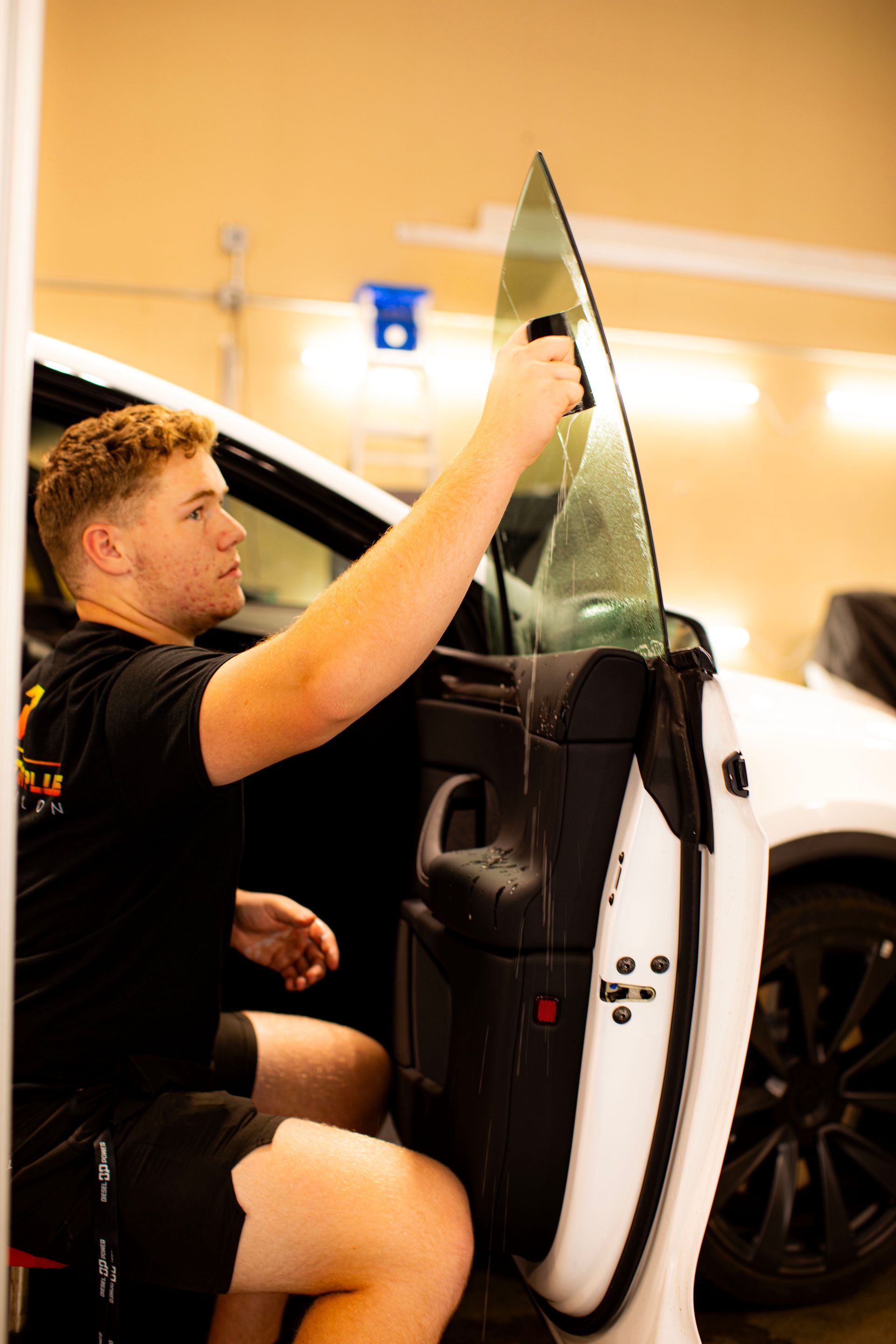By SEO Team
•
May 22, 2025
While often overlooked, auto window tinting offers far more than a stylish appearance—it provides practical benefits that enhance both comfort and protection. In sunny locations like Madras, tinted windows help reduce interior heat, block harmful UV rays, and preserve your vehicle's interior. At Perfection Plus Auto Salon, we offer expert guidance and professional installation to ensure you select the right tint for your needs. Discover how window tinting can be a smart, lasting upgrade for your vehicle. Perfection Plus Auto Salon offers high-quality auto window tinting services and is conveniently available to clients in Madras, Oregon. Our certified technicians use premium materials to ensure both aesthetic appeal and effective UV protection for your vehicle. Advantages of Auto Window Tinting Auto window tinting offers more than just visual appeal—it brings a host of functional benefits that enhance your driving experience year-round. From improved comfort and UV protection to added safety and privacy, window tinting is a practical upgrade that delivers lasting value for any vehicle owner. Enhanced Comfort: One of the most noticeable benefits of auto window tinting is enhanced comfort. Tinted windows significantly reduce the sun's heat entering your vehicle, helping maintain a cooler interior temperature, especially on scorching summer days in Madras, where temperatures can often exceed 90°F. Imagine driving down the road on a blazing July afternoon with cool air filling your car—not only does this make your ride more comfortable, but it also reduces strain on your air conditioning system, potentially extending its lifespan. UV Protection: Quality window tints stand out due to their ability to block harmful UV rays. This feature offers dual protection for both you and your vehicle’s interior. Not only do these tints shield your skin from sun exposure damage, but they also serve as a protective barrier against fading and deterioration of surfaces within your car. Safety: Tinted windows help prevent glare while driving—which can be particularly distracting on sunny days—and add an additional layer of security against break-ins. Thicker films make it more difficult for potential thieves to see inside your vehicle, thereby deterring theft in the first place. Additional Privacy: Speaking of privacy, that’s another often-overlooked advantage of window tinting. With darker windows, you can enjoy greater discretion when parked or stopped at traffic lights. Whether you’re storing personal items in your car or prefer some solitude during your daily commute, window tinting provides a sense of seclusion. All these factors culminate in creating not just an appealing aesthetic but also a practical investment for any vehicle owner. When weighing the advantages, remember that opting for professional installation through a reputable establishment like Perfection Plus Auto Salon guarantees quality service that adheres to local regulations while enhancing the many benefits of window tinting. It's about adding value to your car and making informed choices for both safety and comfort every time you hit the road. Legal Limits for Window Tints in Madras In Madras, as with the rest of Oregon, adhering to specific window tint laws is essential to ensure compliance and avoid fines. The rules are straightforward but crucial for vehicle owners. For instance, Oregon law dictates that the front side windows must allow more than 35% of light to pass through. Darker tints on the front windows can lead to serious legal consequences. On the other hand, when it comes to the rear side and rear windows, there’s more flexibility; while there aren't explicit restrictions on darkness, vehicles with side mirrors must permit at least 35% visibility. It’s important to note that these regulations help maintain road safety and ensure that law enforcement can see inside a vehicle if necessary. As a result, maintaining adequate visibility is critical for driver safety and for avoiding potential traffic stops. You wouldn’t want to end up in an uncomfortable situation just because you were unaware of the laws. Failure to comply can have significant repercussions—this isn’t just about following rules; it's about protecting yourself from unnecessary fines and ensuring a clear view while driving.

